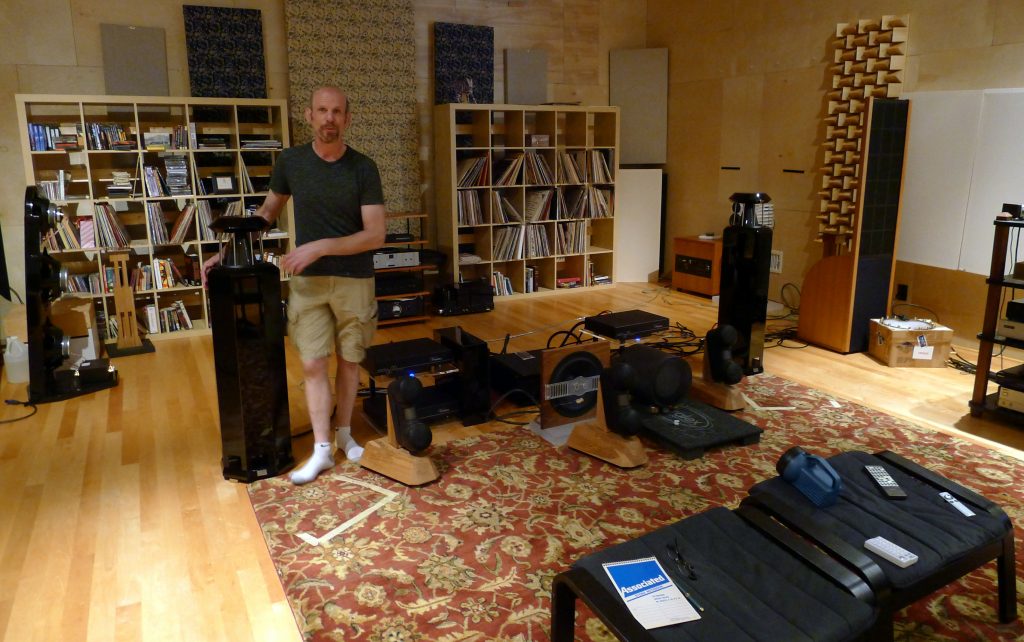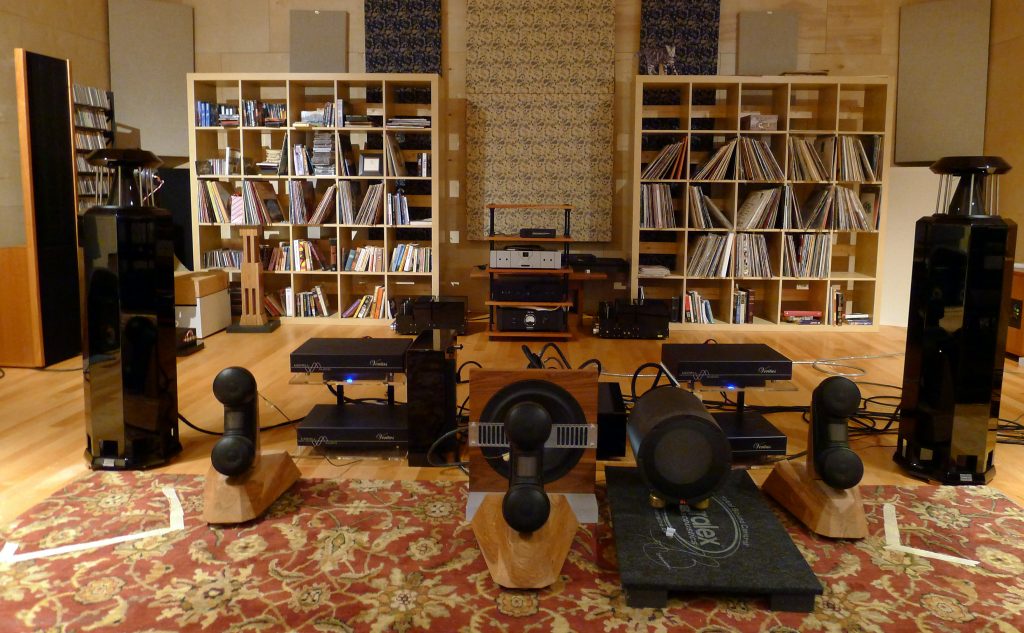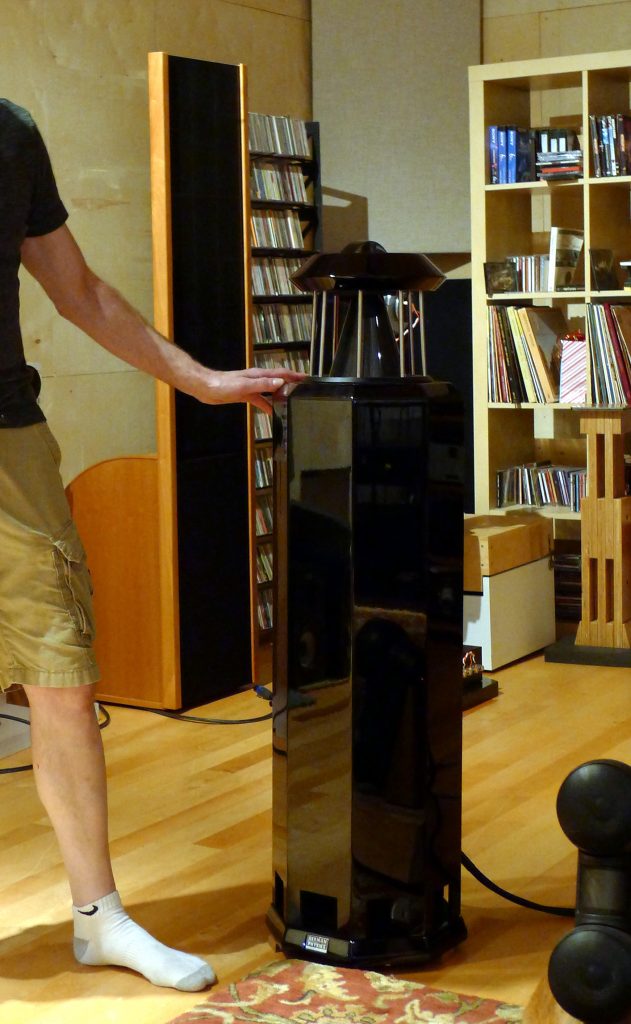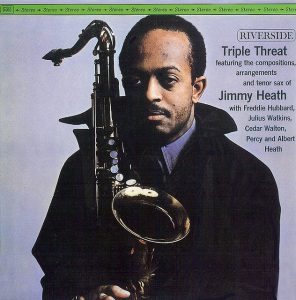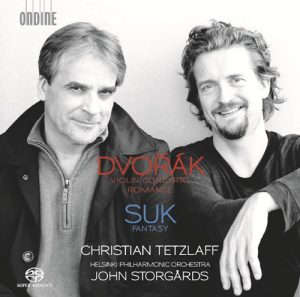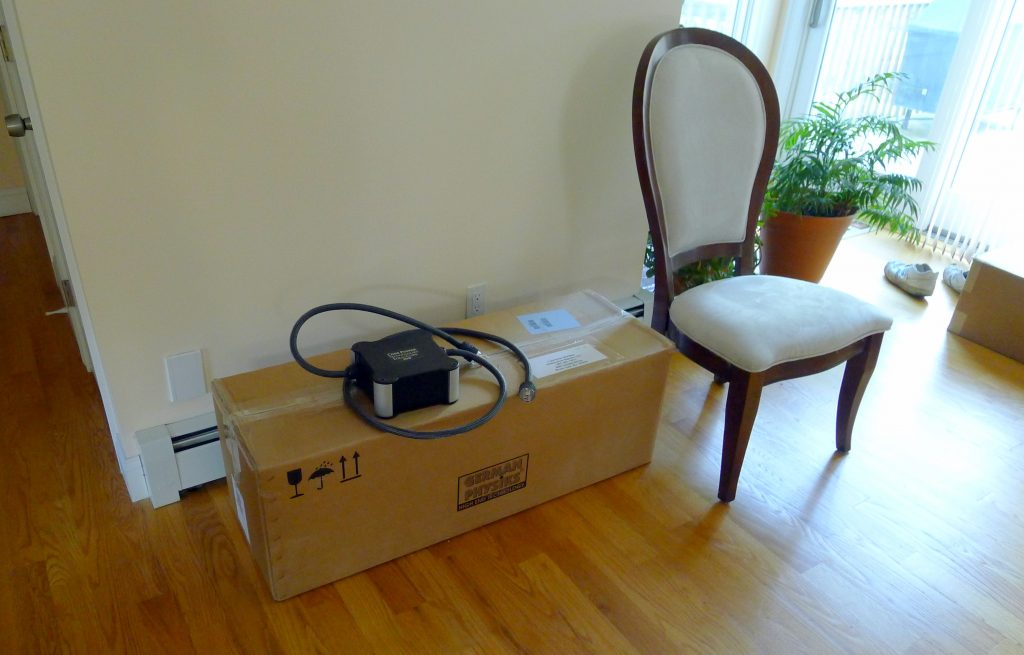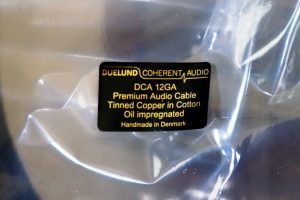It was a glorious day for a Hudson River crossing, with clear skies and endless visibility, the kind of day that photographers love. Lynn and I were off to visit Distinctive Stereo in northern New Jersey. We boarded the New York Waterway ferry at West 39th Street. Eight minutes later we docked at Port Imperial/Weehawken, where we were met by Larry Borden.
Perhaps you recognize Larry—an intense but friendly, slender, middle-aged gent sporting distinctive hats. He is a ubiquitous presence at the audio shows, and you may have read his reviews on Dagogo.com.
The 40-minute drive to his place in northern NJ afforded plenty of time to catch up. Larry had big news. He has resigned from Dagogo and ceased reviewing, and begun a new career as an appointment-only home dealer. He opened Distinctive Stereo about 18 months ago.
The discussion segued to audio priorities and biases. "Used to be I was in love with the kind of tone only tube gear could deliver. Then I discovered it wasn't the tubes that I was enamored with. I was reacting to how bad solid-state was in comparison."
"But contemporary solid-state gear doesn't sound like it did 20 years ago. Now when I listen to those same tube brands, much of it is pleasing in a euphonic way. My current love affair is with select solid-state."
"For me, dynamics is at the top of the list, followed by speed. If a piece of gear doesn't have dynamics, there's no life. I'm not interested in it."
Delving deeper, the subject turned towards the theoretical side of music perception and the physics of audition. He defined sound—including music—as "the instantaneous change in air pressure or ‘volume'." References were made to measurements, graphs, and laboratory testing. (That's Larry's background: With a Ph.D. in neurobiology, he worked for many years in research laboratories.) It reinforced what he said earlier about dynamics being the backbone of it all.
Yes, it was stimulating discourse. I haven't thought about this stuff in years, ever since I bailed and became a science-sceptic. For me, our working model of sound as wave-like changes in air pressure is a useful construct that fits most circumstances. Ultimately, though, Larry and I agreed that the nuances that define live performance are not in the measurements. Maybe they can't be measured: maybe the tools are too crude. Or maybe the engineers need to be trained like audiophiles so they know what to look for. In any case, there are too many things that aren't accounted for.
Larry believes there is a physical explanation for all things in audio, even if we are not yet able to measure or explain them. I'm of the belief that acoustics is more art than science. I prefer to forego explanation and leave it a mystery. I tune by ear.
Last point on this subject: In my list, tone and timbre rule—then comes dynamics.
All this talk about theory had the side effect of increasing my latent anxiety about what I was shortly gonna hear.
The Soundroom
Distinctive Stereo has a single, large soundroom measuring 30' L x 22' W x 11' H. It is highly treated with an assortment of acoustic materials (I was informed this is a work in progress) and set-up for near-field listening: the speakers and the sweet spot chair form roughly an equilateral triangle. In Larry's words, the room treatment and near-field layout take the room out of the equation, so the listener hears mostly direct sound.
Larry seeks out high-value products at a variety of price points in order to provide customers with systems that meet their needs.
The System
The complete system we listened to was comprised of:
- German Physiks HRS-130. MSRP $22,750
- Merrill Audio Christine Linestage. MSRP $12,000
- Merrill Audio Veritas Monoblocks. MSRP $12,000
- SONY CDP-X707ES, modified, as a transport only
- Apple Mac Mini with Core Audio Tech Kaia power supply, running ROON software. Total DAC USB cable/filter
- EMM Labs DAC2x. MSRP $15,500
- Merrill Audio ANAP speaker and interconnect wires.
- Various power cords, including Waveform Fidelity HE on the Veritas amps
The Sound
I was particularly keen to check out the German Physiks HRS-130 loudspeakers, the object of much attention at the Rocky Mountain and Munich shows. The design goal of the speaker is to:
…provide a level of coherence that cannot be obtained with loudspeakers using multiple drivers, each with its own dispersion and distortion characteristics. This coherence, in combination with the omnipolar radiation pattern, provides a more life-like presentation than can be obtained with more traditional designs.
I brought along a handful of CDs, mixed fare in my current rotation. We began with The Buster Williams Trio—65 Roses, recorded by PF's own Jim Merod (Blueport BP-J016).
The trio is clustered together very deep down center, almost like it was mono. That's just what I expected to hear—it appears that way in my system.
I immediately noted the coherence as you move around the frequency range and the seamlessness of the soundstage. The stage is floating very far back between the speakers. Instruments don't pop out at you; they stay behind the plane of the stage. Nothing can be localized in the drivers—the speakers disappear.
I was struck by the power of Buster's double bass: big, round, tight and tuneful, very snappy, so it was easy to follow his solos. Buster is one of the great unsung masters of the instrument, he continually amazes. The cymbals have a delicate shimmer. Perhaps the piano could have a longer decay trail and more air. It is a bit warmer and more midrangy than I'm used to.
Next, I put on a reissue of Triple Threat, an old Riverside from 1962, with Jimmy Heath fronting a stellar lineup (OJCCD-1909-2). This is by no means audiophile fare, but it is great music. I was looking to hear the early stereo ping pong effect, with the instruments hard left/right in the speakers… and so it was, just as it is in my room. This tells me Larry's system responds to changes in source material. Jimmy's tenor sax sounds sexy: full-bodied, warm and fluid. I looked over and said to Larry, "Well, that's a relief!" I knew he had been concerned that I might not like his sound, as it is considerably different from my own reference system (and also considerably less expensive).
Now we moved to audiophile material with a splendid new recording of the Dvořák Violin Concerto with Christian Tetzlaff (Ondine CDE 1279-5 SACD). A huge soundstage unfolded well behind the speakers, close to the front wall and nearly touching the side walls. The HRS-130 speakers convincingly reproduced the expanse of a large group of players. This was much wider and deeper than I get at home, nearly approaching the size of an orchestra.
The German Physiks HRS-130 Speakers
The soundstaging and imaging of the HRS-130 reminded me a lot of the mbl Radialstrahlers. Both are omnis and throw expansive stages with large, diffuse images. Larry made a point to say that's where the similarity ends. Internally they are completely different designs.
At my request, Larry provided the following technical description.
Like all German Physiks loudspeakers, the HRS-130 is based on the DDD—the Dicks Dipole Driver. The DDD is a wide bandwidth, omnidirectional driver, inspired by the "Walsh driver" as used in Ohm F loudspeakers. The DDD uses three modes of operation: At the bottom end of its operating range it is pistonic, the same as most conventional drivers. Higher up in frequency it uses being wave radiation, in which the voice coil causes the thin diaphragm (made of carbon fiber) to flex and a wave to travel along its surface. Last, it uses modal radiation, in which areas of excitation are created on the diaphragm surface like those formed when a stone is dropped into water. The skillful combination of these three operating modes gives the DDD its very wide operating frequency range, allowing it to function as a near point source for all frequencies from approximately 200 Hz to 23kHz. The switch from one mode to another is accomplished purely mechanically; the only electronic crossover for the DDD is a high-pass filter at approximately 220 Hz.
The HRS-130 is the second smallest model in the German Physiks lineup. Each speaker has dimensions of 12.8" W x 49.6" H x 12.8" D, and weighs 76 pounds. Its sensitivity is approximately 87dB for 1W at 1 meter, with a nominal impedance of 4 Ohms. The DDD crosses over at 220 Hz to a 10" downward-firing woofer. Each speaker has two sets of binding posts, allowing it to be biwired or biamped, and has a high frequency adjustment (- 2dB, Flat, 1+dB, +4dB), centered at 8000Hz, thus allowing the speakers to be adjusted for the listening room's acoustics. The cabinet is octagonal to minimize resonance.
Going Home
We closed the session with a couple of tracks via the music server, which didn't come close to the fine quality of CD playback. IMHO, server-based playback has a ways to go yet. I still hold by physical media, either CD or LP.
Night had fallen by the time we boarded the ferry for the return trip. The skyline looks so beautiful on a clear night—there's no place like the Big Apple. I came away feeling the day had been well spent.
201-391-1411






